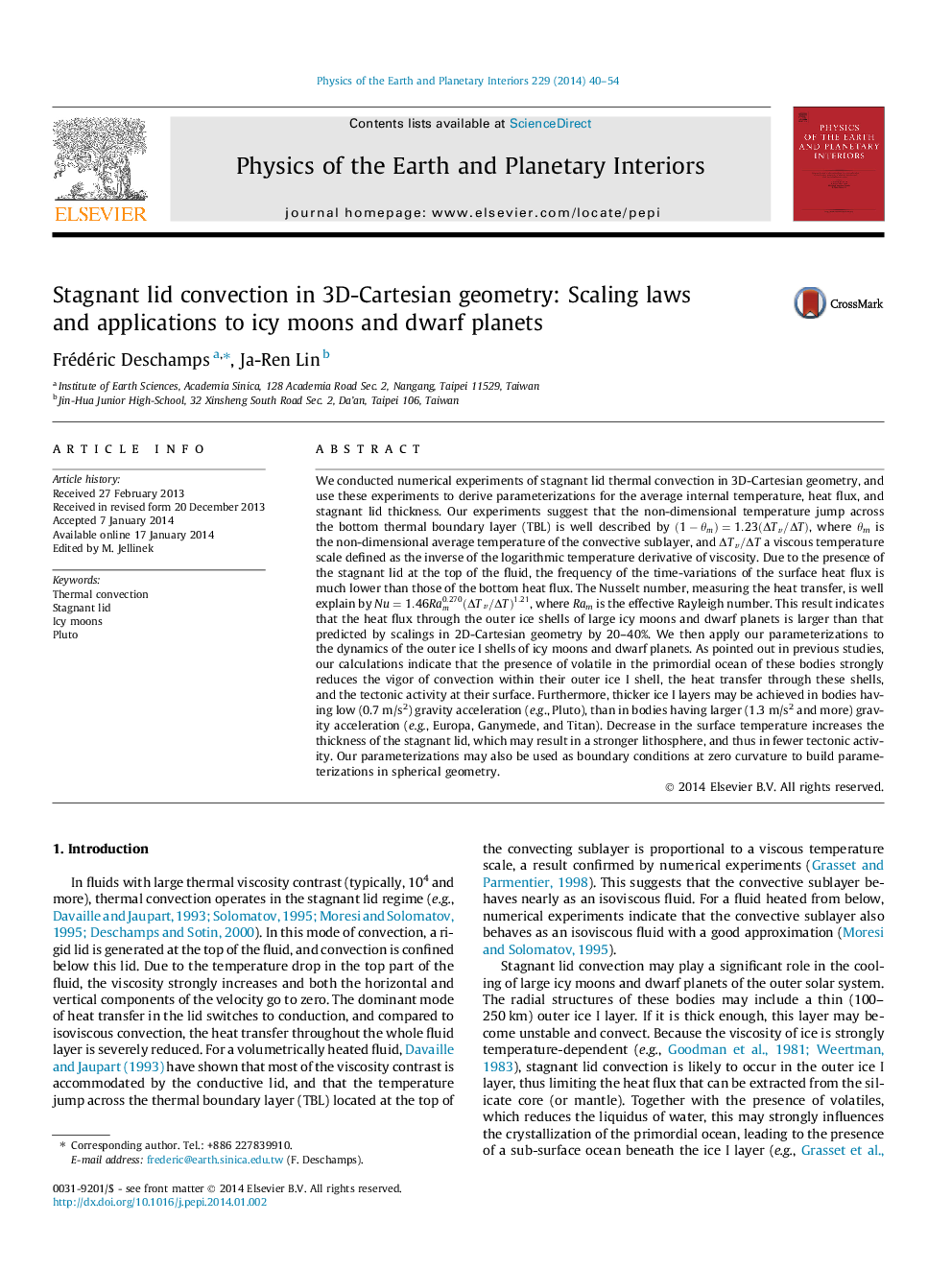| کد مقاله | کد نشریه | سال انتشار | مقاله انگلیسی | نسخه تمام متن |
|---|---|---|---|---|
| 4741626 | 1641512 | 2014 | 15 صفحه PDF | دانلود رایگان |

• We perform experiments of stagnant lid convection in 3D-Cartesian geometry.
• We derive heat flux and temperature scalings from these experiments.
• We apply these scalings to outer ice shells of icy moons and dwarf planets.
• Bodies with smaller gravity acceleration can crystallize thicker ice shells.
• Low surface temperatures favor stronger lithosphere due to thicker stagnant lid.
We conducted numerical experiments of stagnant lid thermal convection in 3D-Cartesian geometry, and use these experiments to derive parameterizations for the average internal temperature, heat flux, and stagnant lid thickness. Our experiments suggest that the non-dimensional temperature jump across the bottom thermal boundary layer (TBL) is well described by (1-θm)=1.23(ΔTv/ΔT)(1-θm)=1.23(ΔTv/ΔT), where θm is the non-dimensional average temperature of the convective sublayer, and ΔTv/ΔTΔTv/ΔT a viscous temperature scale defined as the inverse of the logarithmic temperature derivative of viscosity. Due to the presence of the stagnant lid at the top of the fluid, the frequency of the time-variations of the surface heat flux is much lower than those of the bottom heat flux. The Nusselt number, measuring the heat transfer, is well explain by Nu=1.46Ram0.270(ΔTv/ΔT)1.21, where Ram is the effective Rayleigh number. This result indicates that the heat flux through the outer ice shells of large icy moons and dwarf planets is larger than that predicted by scalings in 2D-Cartesian geometry by 20–40%. We then apply our parameterizations to the dynamics of the outer ice I shells of icy moons and dwarf planets. As pointed out in previous studies, our calculations indicate that the presence of volatile in the primordial ocean of these bodies strongly reduces the vigor of convection within their outer ice I shell, the heat transfer through these shells, and the tectonic activity at their surface. Furthermore, thicker ice I layers may be achieved in bodies having low (0.7 m/s2) gravity acceleration (e.g., Pluto), than in bodies having larger (1.3 m/s2 and more) gravity acceleration (e.g., Europa, Ganymede, and Titan). Decrease in the surface temperature increases the thickness of the stagnant lid, which may result in a stronger lithosphere, and thus in fewer tectonic activity. Our parameterizations may also be used as boundary conditions at zero curvature to build parameterizations in spherical geometry.
Journal: Physics of the Earth and Planetary Interiors - Volume 229, April 2014, Pages 40–54